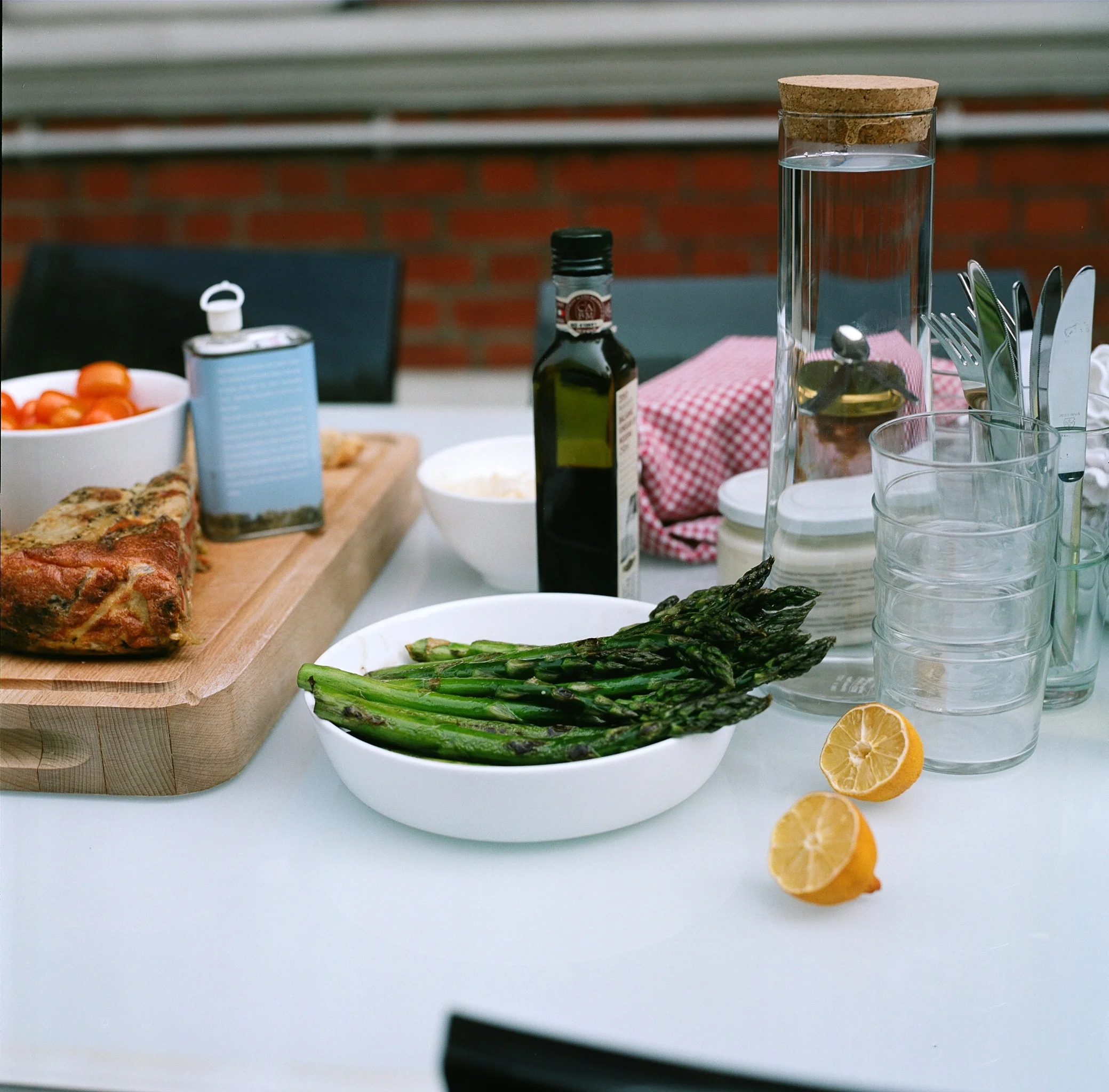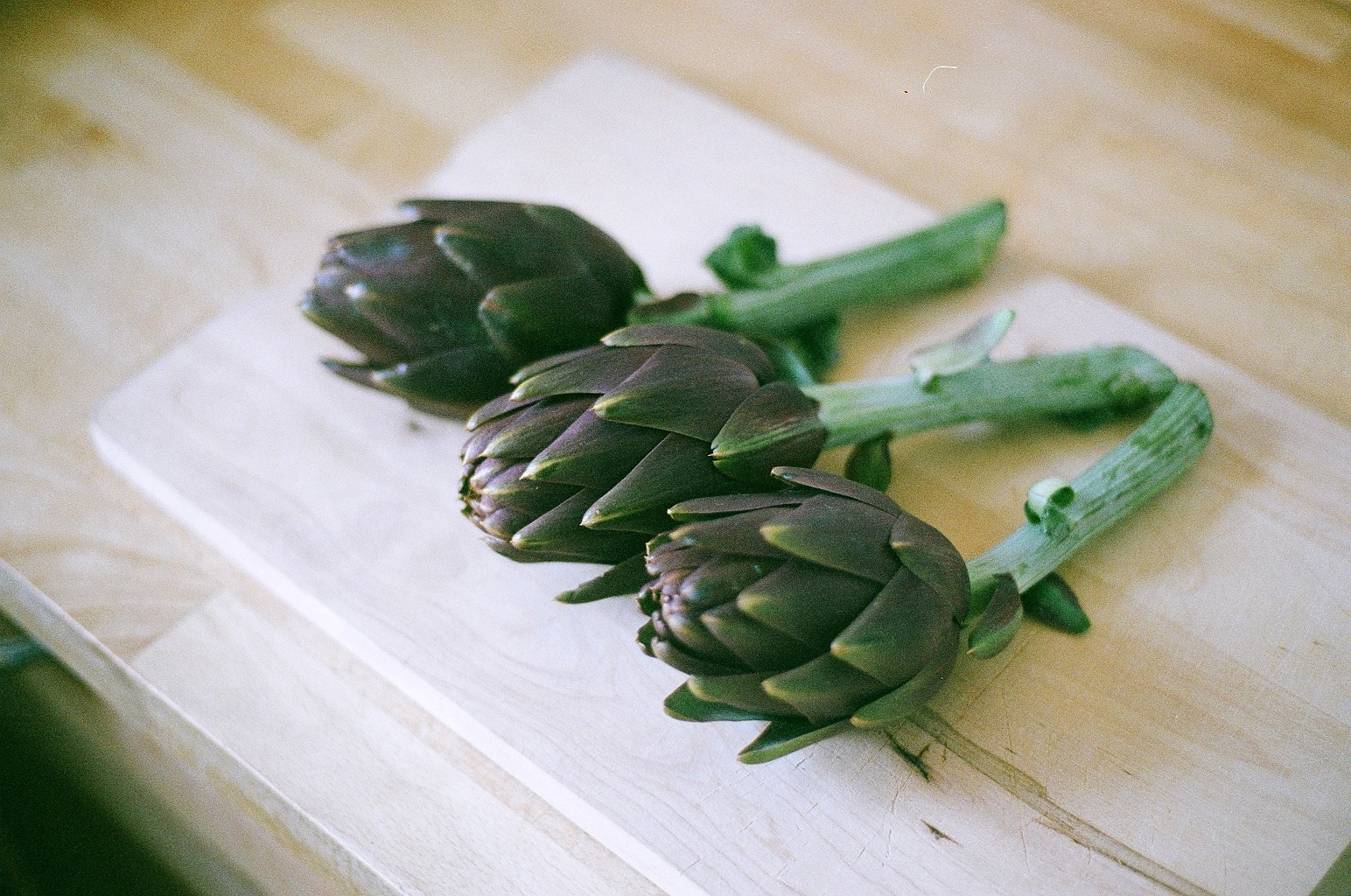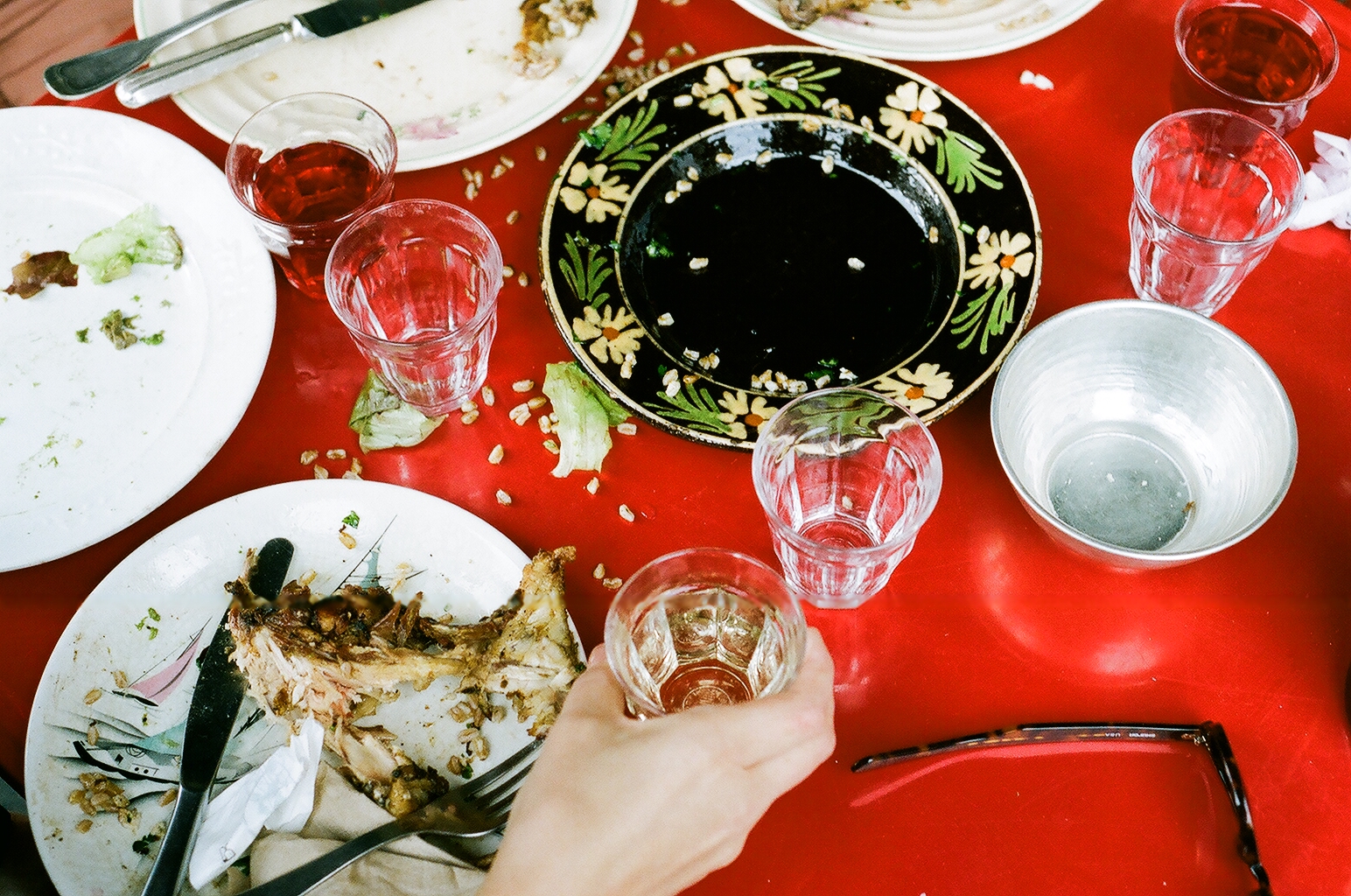Both Michael Muller and Molly Wizenberg named Brian Ferry as one of their food photography hero. Obviously I had to check out his work and I'm glad I did. Another wonderful film photographer that utilizes what is in front of him naturally instead of creating something artificial. His photos of London, where he currently resides, is making me want to visit the city even more. It's on my top 5 places to visit someday but I guess in the mean time I'll just have to stare at Brian's beautiful photos.
Q. Can you tell me what you’re trying to capture when you take your food photos? A. I guess I'm trying to capture something fleeting about the food -- the way it makes me feel, what excites me about it ... if I'm picking up my camera to take a photo of some food, there is usually a reason - it's a good moment with friends, or the light happens to be really nice, or there is something else there that I see. Most of my food photos are not styled or set up, and I shy away from that sort of food photography - it's not interesting to me. Instead, I like to capture food in its natural state. So I usually shoot food in the process of actually being prepared and/or eaten. Food is so much more to me than the actual edible part of it, and it's such a huge part of my life, so I try to reflect that.
Q. Do you approach a food photo differently than non-food photo? A. Not really. In both instances, I'm looking for something interesting - good light, or a certain detail -- or I'm hoping to tell a story with the photo. In my mind, there's really no difference between a food and a non-food photo.
Q. Have you always been interested in photography? A. No. I got into photography on a whim, really - and it wasn't until about 2005 that I started. I was looking at photos on Flickr a lot and feeling really inspired, and I thought to myself: "maybe I can do this." So I picked up a cheap point-and-shoot camera to start, and just started playing around. I was in law school at the time, and thinking creatively was a welcome diversion from my studies. In 2008, I decided to take a photo every day for the entire year (a Project 365) in an attempt to shoot lots of photos and learn more about photography. It did the trick, and I was hooked. I've been pretty obsessed with shooting photographs ever since.
Q. Are you only or mostly shooting on film? What is it about film that keeps you shooting analog? A. Yes, I almost only shoot film. There are many reasons that I shoot film, and the first is because I think analogue photos are infinitely more interesting-looking. There is a true depth to them that cannot be replicated with digital. It's a personal preference, I know - but film inspires me. Also, I keep coming back to this idea that it feels like I'm actually making something when I shoot with film - the process of exposing actual film and using a manual camera to do so (without the help of fancy digital technology) is very tactile for me. I love the process - choosing a film, a film speed, trying different films, and then seeing the results. Sometimes the results are surprising .... you hope they will be a pleasant surprise, but sometimes they are not. That unpredictability is really nice in this day and age. I'm also more thoughtful when I shoot film - instead of snapping 40 photos of the same thing, deleting all but 2 of them, and then tinkering around with them in photoshop, I try to get it right the first time, with the first shot. It's meditative for me.
Q. How has moving from Brooklyn to London changed or influenced your photography style. Or maybe it didn't change. A. It's hard for me to answer this question - I bet others could probably tell you how it's changed better than I can. From my point of view, I haven't changed anything consciously. However, I am always trying to get better and to push myself - so if my style has changed, I think it's a result of my efforts in this regard more than moving to a different city. I do think that the experience of moving to a new country and getting acclimated probably manifested itself in my photographs in some way -- I tend to process things (especially new experiences) by shooting photographs, if that makes sense. So my efforts at creating a home in London and finding a niche in an unfamiliar place are certainly reflected in the photos I take.
Q. Any food photography heroes? If not any photography heroes? A. Jason Lowe and Toby Glanville are two of my food photography heroes. If you look at the St. John cookbook volume 2 (Beyond Nose to Tail Eating), the photos were shot by Jason Lowe and to me, they are absolute perfection. Every single one of them - creative, surprising, beautiful, atypical. That's the sort of food photography that I truly admire. And I have many other photography heroes, but a few that immediately come to mind are Jon Levitt, Rob Kulisek, Jody Rogac, Nicholas Haggard.
Q. Best meal so far in 2011? A. Dinner in February at St. John Bread & Wine with my brother and sister-in-law, who were visiting from the U.S. Langoustines with mayonnaise, duck liver on toast, Eccles cake with Lancashire cheese, the list goes on. We ate a massive amount of food and it was incredible. We were there for about 3 hours, I think. Even better than the food was having such a memorable meal with family - I miss them.
All photos courtesy of Brian Ferry from The Blue Hour








